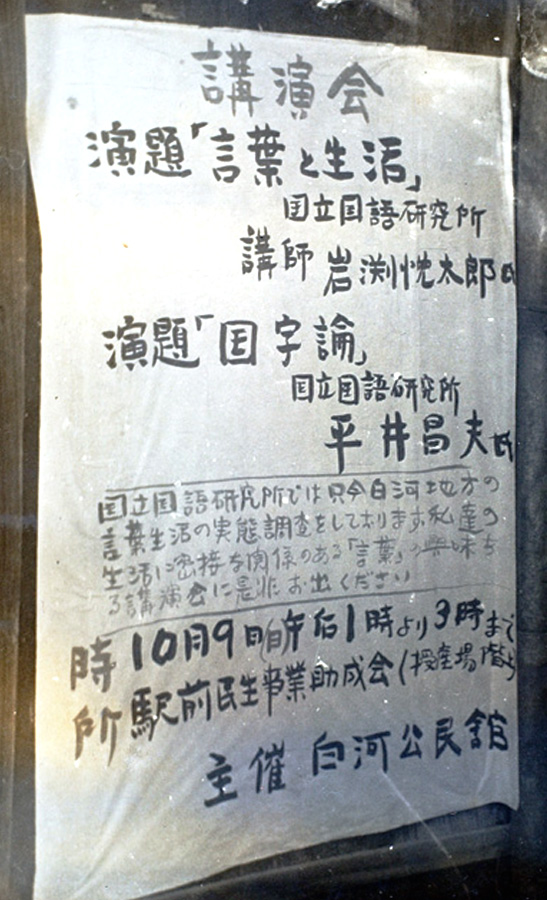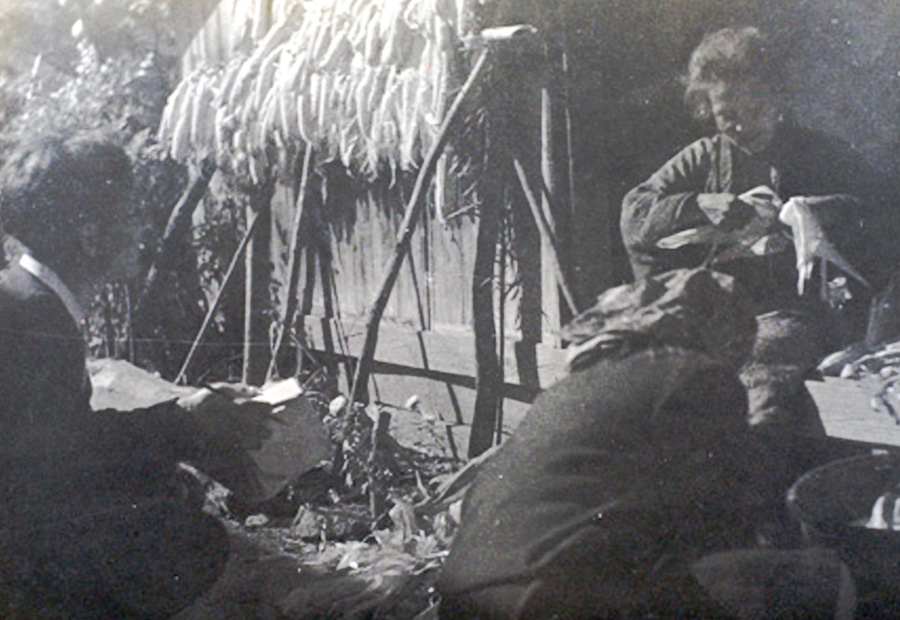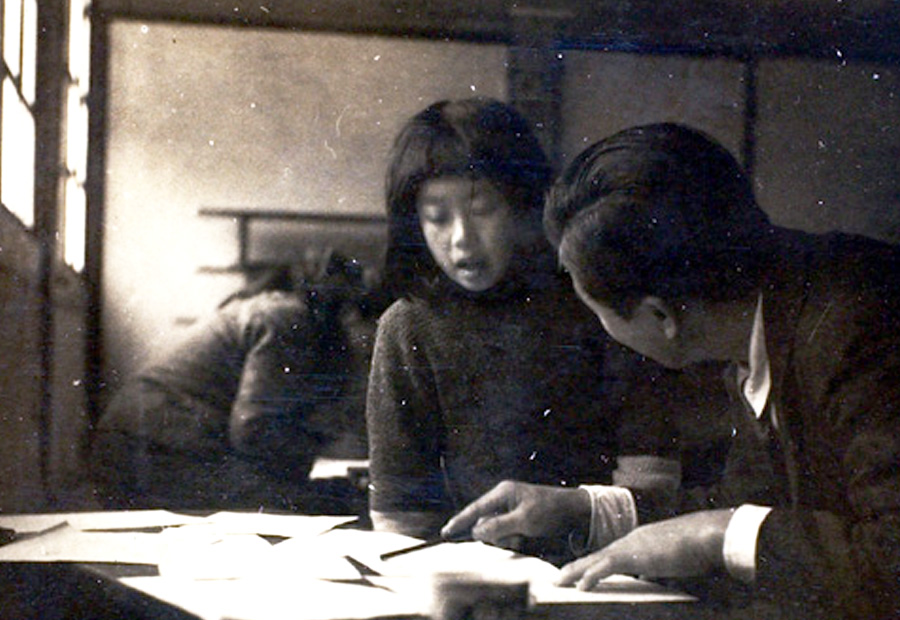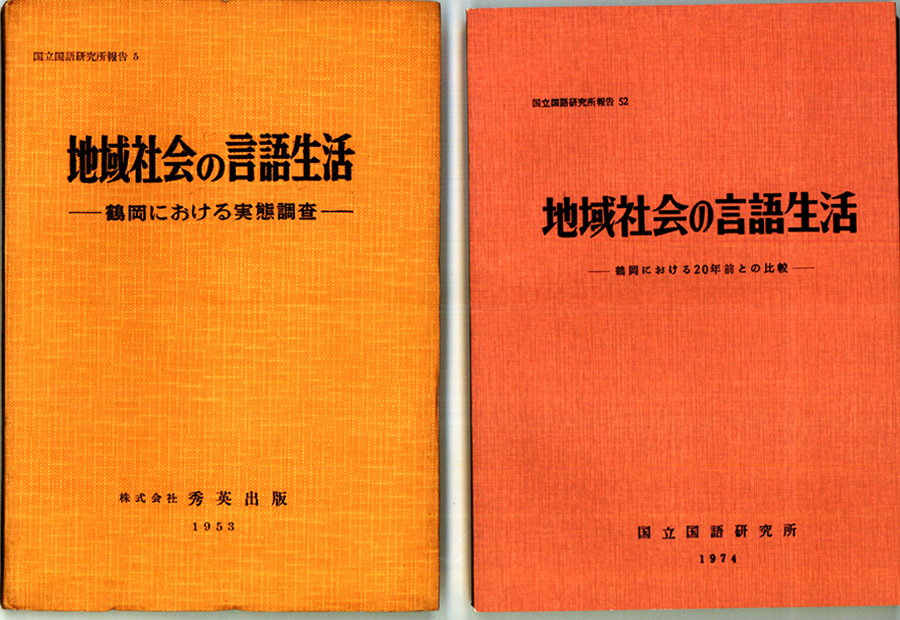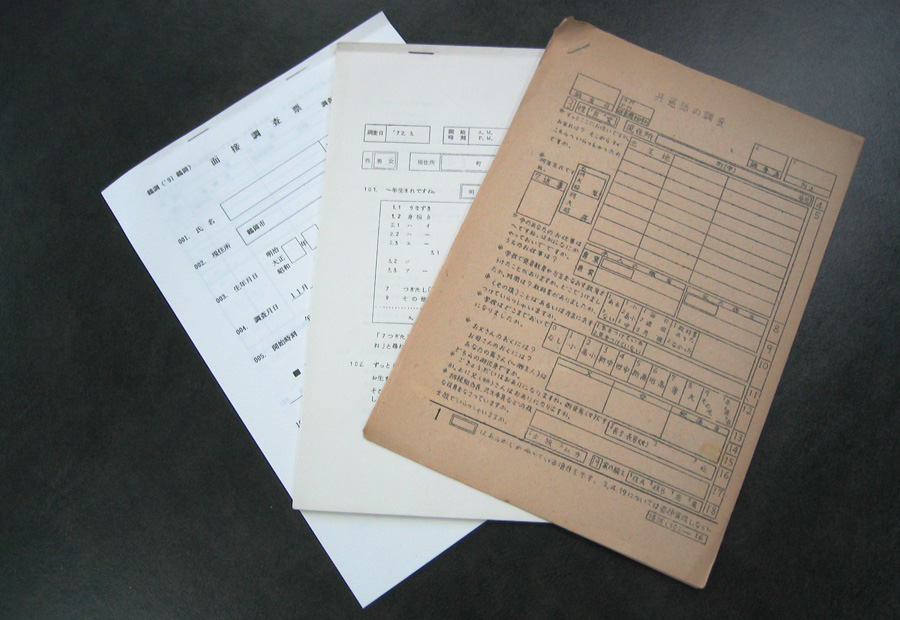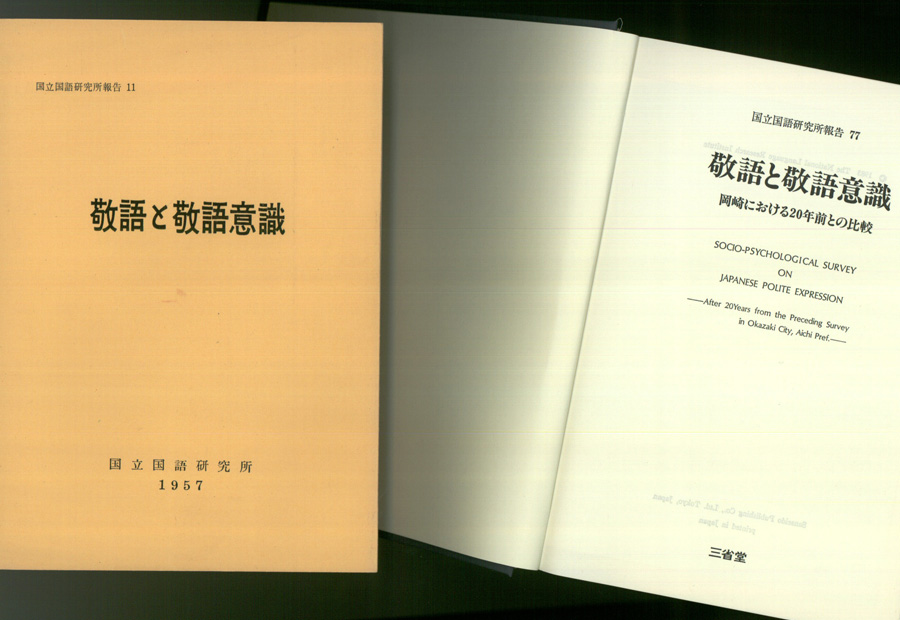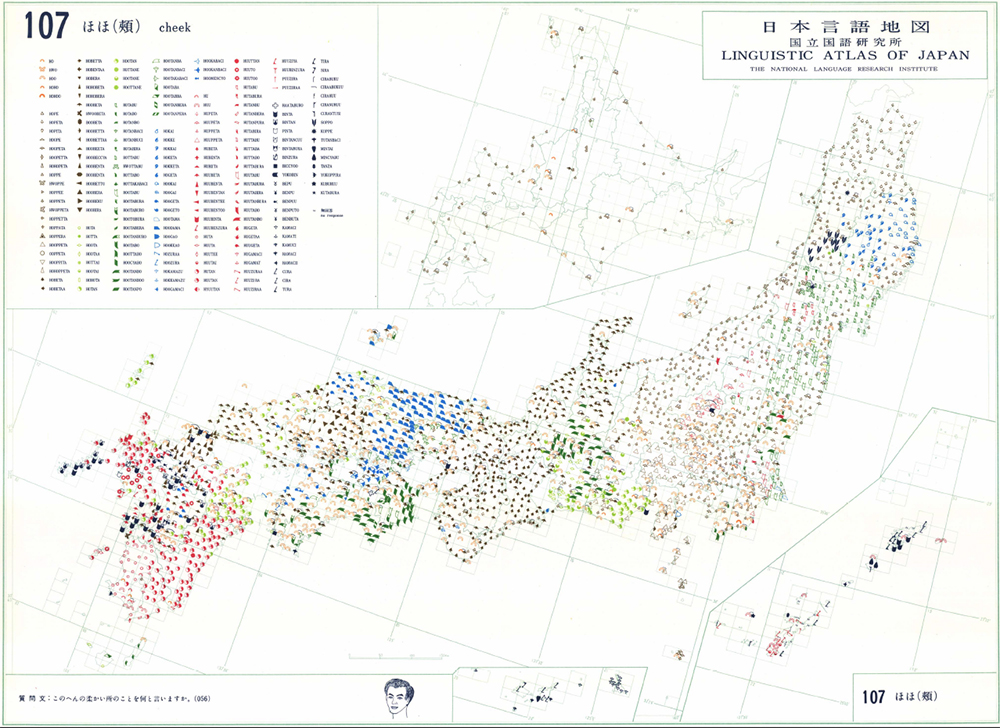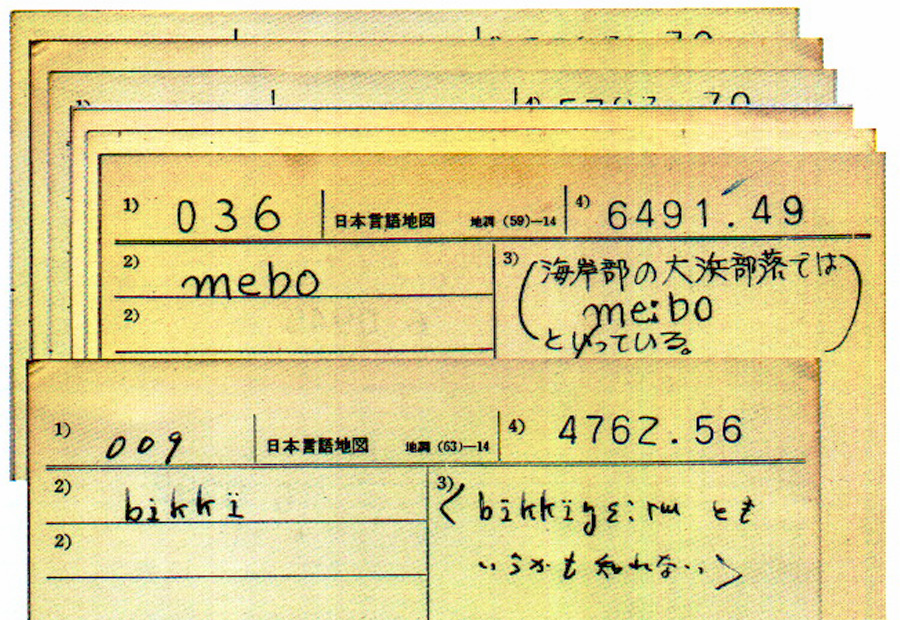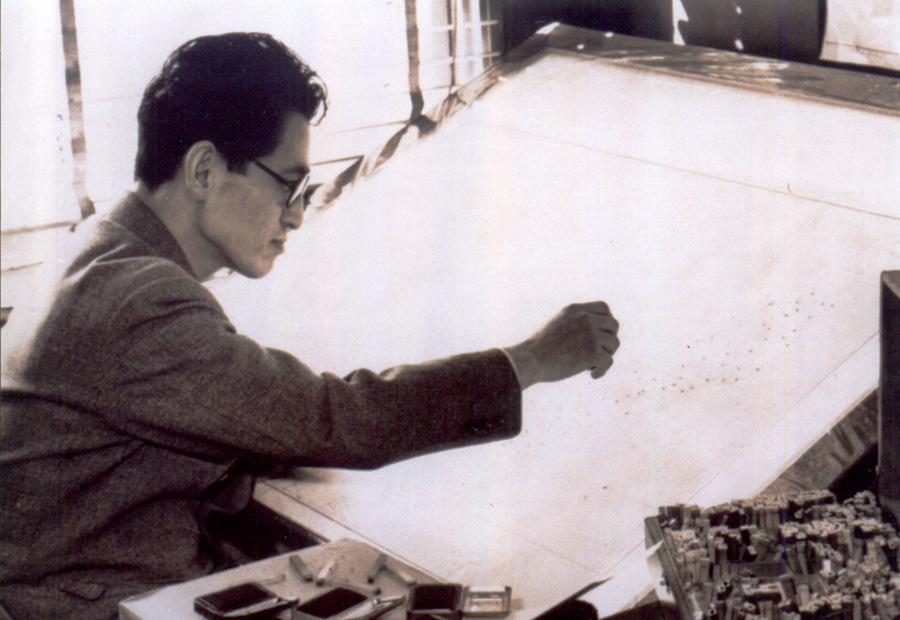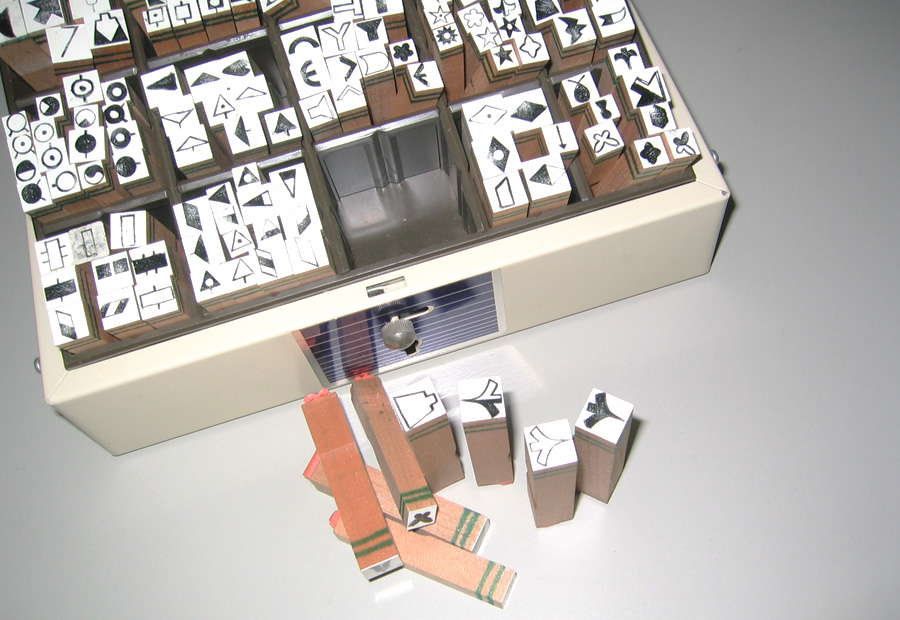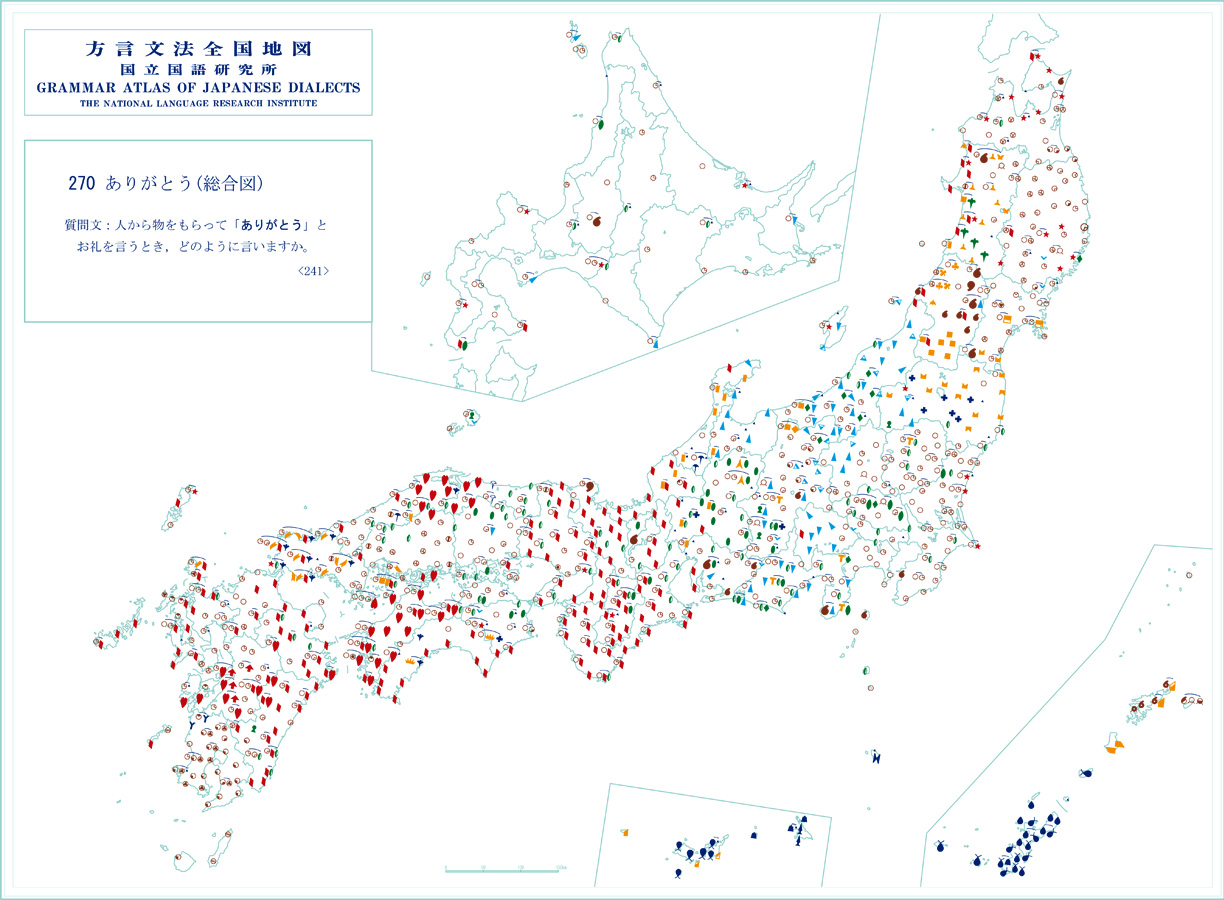The establishment of sociolinguistics and long-term social research
"Language life" has been a keyword in the Institute’s research since the beginning, and as a result of the efforts in this area, several research reports were published. The first was the book Hachijo-jima no Gengo Chosa (Research on the Language of Hachijo-jima Island)", and the second was the book Gengo Seikatsu no Jittai: Shirakawa-shi oyobi Fukin no Noson ni okeru (The Reality of Language Life in Shirakawa City and Neighboring Villages).” The analysis methods based on social research later developed into the research field called sociolinguistics.
The Institute has conducted a variety of sociolinguistic studies. One typical effort was the long-term research in Tsuruoka City, Yamagata Prefecture. This project investigated the reality of language life at the same site at 20-year intervals. The first survey was conducted in 1950 (Showa 25) and the last in 2011-2012 (Heisei 23-24). Similarly, research on the use of honorific words was conducted in Okazaki City, Aichi Prefecture in 1952-1953 (Showa 27-28), in 1971-1972 (Showa 46-47) and in 2008-2009 (Heisei 20-21).
In social research, a large number of investigators collect data by conducting interview surveys using the same questionnaires. Data from many respondents are necessary to conduct a reliable analysis. This kind of large-scale research, repeated over many years, is unusual. Such longitudinal research is a signature accomplishment of the Institute, and it is possible only through organizational efforts. These surveys made it possible to analyze language change over time scientifically.
